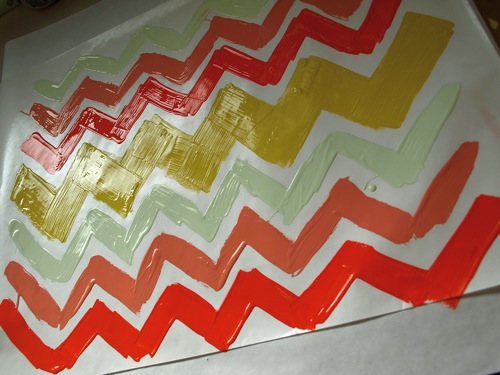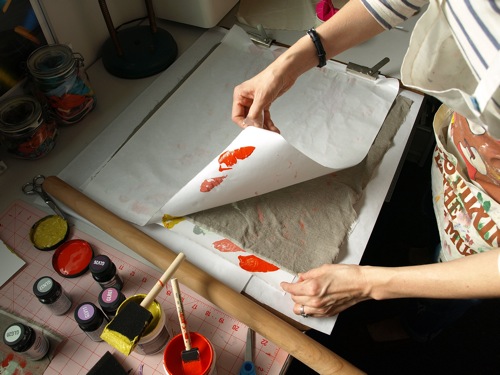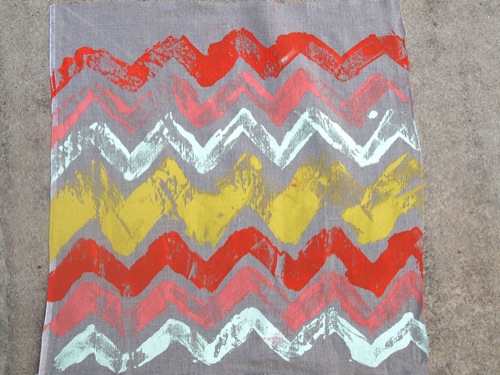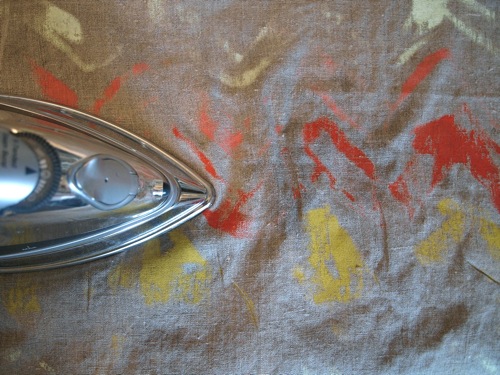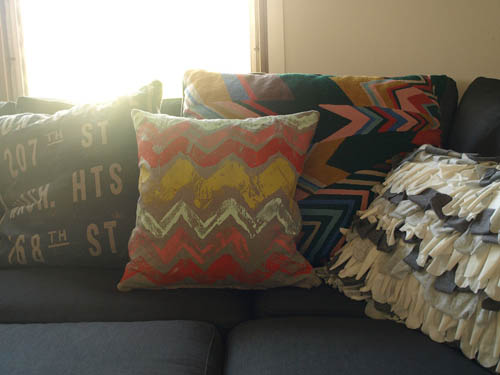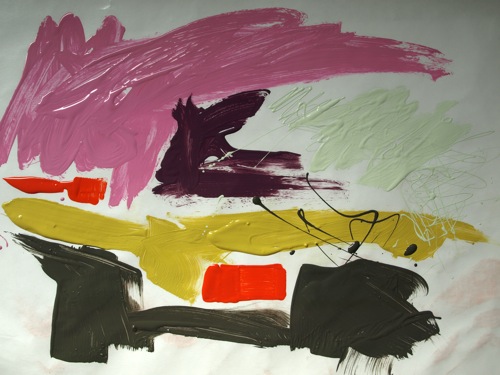In college, when I was studying design, printmaking classes were always my favorite. So when Miggy suggested a DIY for fabric monoprints, I wanted to give her a high-five! I think you’ll love this project. I want to try it on pillowcases and onesies, and maybe a picnic blanket too! — Gabrielle
——
Hey guys! I’m so excited to be sharing another DIY on Design Mom. When it comes to creating, my two great loves are painting and sewing. So it should come as no surprise that I’m always trying to combine the two. I had this idea when thinking back to my art school days. In the world of printmaking the general idea is that you have an image and then make several (hundreds even!) copies of that image. However the beauty and genius of the monoprint is that it’s a one-shot deal. You spread some paint on one surface and transfer it to another surface. One time. It’s a little leap of faith, and who doesn’t need more faith?
Now, some people might ask, why do a monoprint? Why not just paint directly on the fabric? Well I think you’ll see that ‘printing’ gives it a much different look. The texture and feel of the paint is entirely different than if you just painted directly on the fabric. And it’s fun. Duh.
So we’re going to recreate a simple printing press using stuff in your house, and I bet you already have everything on hand.
Supplies:
– Fabric to print on
I wanted to make some throw pillows so I cut the fabric to size. You could easily do this on a shirt, onesie, tote bag, etc. Just make sure you put some cardboard between the layers of fabric so paint doesn’t bleed through.
– Paint
Craft paint, fabric paint, latex house paint. It doesn’t really matter. However, for regularly laundered items like onesies and shirts, fabric paint might be your best option. For this project I used sample jars of latex house paint from Home Depot.
– Freezer paper
Wax or parchment would work well too.
– Brushes
– Hard surface to work on
– Rolling pin
Once your supplies are gathered start with laying down some freezer paper to protect your surface. For the width of my fabric I needed two sheets overlapping, side-by-side. Since I was using an artists’ clipboard I used the clips at the top to secure the paper in place. I also used objects to weigh down the bottom corners. Tape would work just as well.
Now you’re going to take another sheet of freezer paper and use this as your creating surface, I used the shiny side up. Now go ahead and paint directly on the paper! You can be as free and abstract or detailed and specific. Just paint fast, because the paint needs to be wet for the printing process! I did some quick freehanded chevron stripes, but I also do a little more spontaneous/abstract piece as well. You’ll want to be generous with your paint, but not overboard. You don’t know exactly how well the paint is going to transfer, spread out and/or blend together. That’s the fun part!
Next take your fabric and carefully lay it over the painted paper. If it’s a large piece of fabric, you may want help laying it down, because once the fabric hits the paint, you don’t want to move it! I used a nicer linen and some inexpensive muslin for these projects. Make sure your fabric is prewashed and preshrunk. I did leave my fabric a little wrinkled and again it added a little depth/texture during the printing process.
Now take more freezer paper and cover your fabric. This is to protect your rolling pin from the paint. You may want to wrap your rolling pin in cling wrap for double protection. Take your rolling pin, press down hard and roll right over the top of your fabric. You can do this a couple times, especially if you weren’t very generous with your paint.
Carefully lift off the top layers of freezer paper and lay it aside — remember there’s still wet paint on there! And then very carefully peel off your fabric. Again it may be helpful to have someone hold down your painted freezer paper while you lift the fabric off.
Ta-da! Take a look at your completely original, 1-in-a-million, new monoprint!
Once the paint has dried feel free to iron the fabric on the reverse side.
Here’s the finished pillow. I love how it turned out. One final tip: You can let the paint on the freezer paper dry, and use it as wrapping paper. Good luck and have fun!
P.S. — Here are a couple of shots of a more abstract monoprint I did. I wonder what I’ll make with it!




